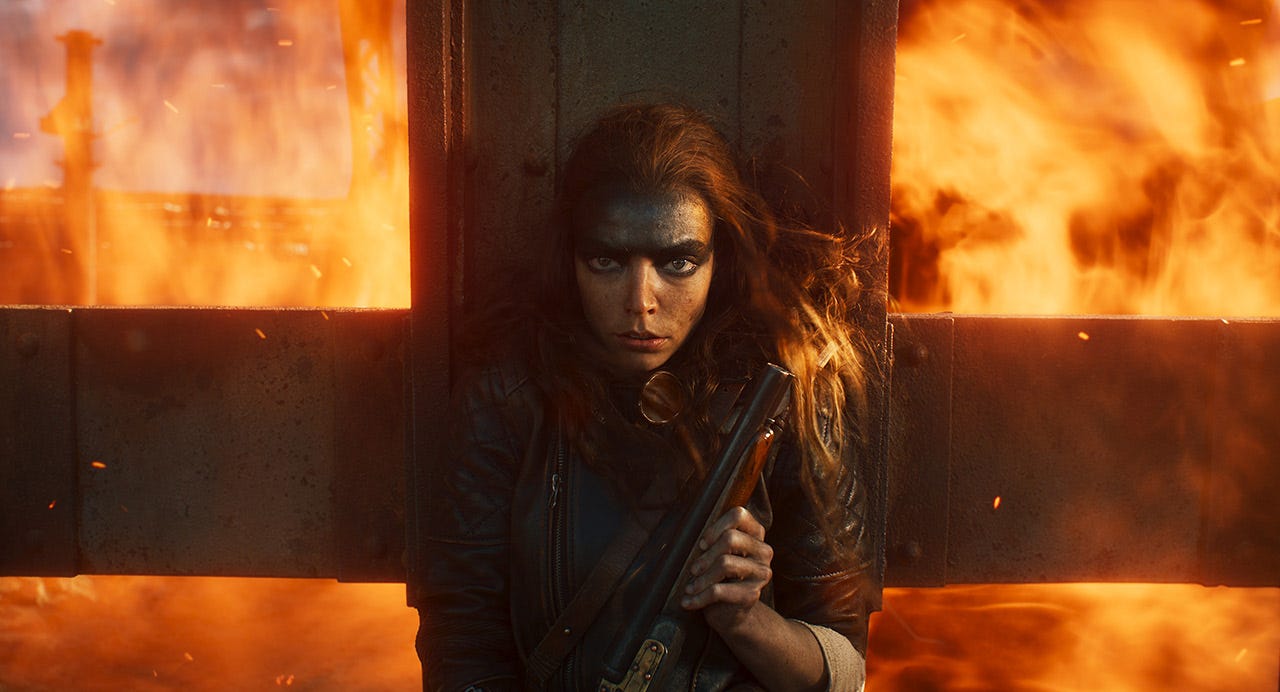A Quick Reflection on 'Furiosa'
George Miller's latest film is excellent, but it opened to box-office disappointment.
The prequel to Mad Max: Fury Road, George Miller’s Furiosa has debuted to an apparently disinterested audience: as Screen Rant reports, Furiosa made an estimated $31 - $33 million in the US and Canada over Memorial Day Weekend, and the worldwide earnings wound up essentially doubling that number. This is much less than was presumably hoped, given the film’s $158 million budget. It’s probably a bit too early to draw any broad conclusions, but for now, suffice it to say that financially speaking, Furiosa is doing worse than I would have imagined.
The film is fantastic. It might even be George Miller’s best film yet. That said, it does play out less like the beloved Fury Road and more like a Sergio Leone epic: slow, deliberate, careful. Furiosa is a coming-of-age film, after all, something very different from prior entries in the Mad Max franchise.
The expansive use of time in Furiosa is a reminder of the harshness of the wasteland. Time drags on, and so too does the need for the resources necessary for survival. The coverage of an extended period of Furiosa’s life makes Furiosa the most brutal Mad Max film yet: after the end of the world, time seems to only create more wounds.
I’m tempted to speculate wildly as to the reasons for Furiosa’s failure, but I’ll leave that to the box-office analysts. I will say that Furiosa is that rare film that I wanted to see that it seemed like everyone else wanted to see, too. There’s a small overlap between the weird cinephile crowd and the big summer blockbuster crowd, and George Miller’s Mad Max films live there.
So it was nice to feel at least a little connected to the moviegoing zeitgeist, but maybe less so than I initially thought. As far as Furiosa goes, only time will tell.



